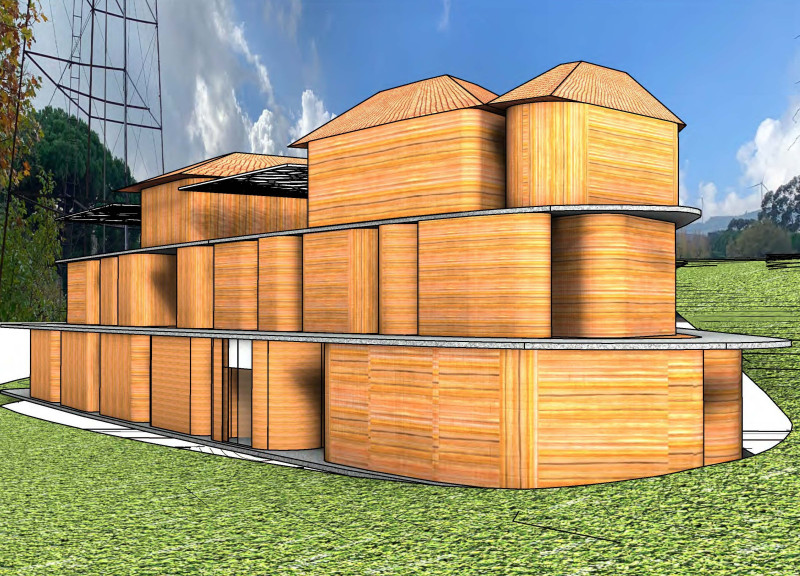5 key facts about this project
Located in a scenic vineyard, the reception and hotel structure is designed to enhance the landscape while establishing a strong link between the building and its agricultural surroundings. The design concept focuses on shaping forms influenced by wind patterns, creating an experience that reflects the essence of the vineyard. Serving both hospitality and agricultural functions, the structure is a thoughtful addition to its environment.
Conceptual Framework
At the heart of the design is the experience of walking through a vineyard, a space carefully maintained by farmers. The building embodies the idea of "carving of the wind," emphasizing its connection to the grapevine. This approach recognizes the importance of airflow for grape production, ensuring the architecture works alongside the natural qualities of the site.
Spatial Organization
The arrangement of spaces is essential to the project, with circulation paths that reflect the natural curves of the vineyard. These pathways promote easy movement both within the structure and to the surrounding areas, creating a connection between visitors and the environment. By incorporating winding passageways similar to those found in the vineyard, the design invites exploration and interaction.
Environmental Integration
Analysis of the site shows a focus on environmental factors, particularly wind flow and visibility to the vineyard. The design responds to local climate conditions, allowing both occupants and the vineyard to benefit from the building's placement and orientation. This reflection of the natural environment highlights a commitment to enhancing agricultural practices while maintaining a pleasing appearance.
Distinctive Details
The roof has been carefully shaped to align with the surrounding landscape but features irregular forms to accommodate different uses within the hotel and reception areas. These design choices create an interesting visual effect while serving practical purposes. Light and shadow play across the unique roof surface, adding depth to the structure throughout the day and enriching the overall atmosphere of the building in the vineyard setting.






















































